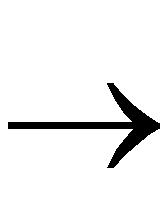
Hierarchical Design
You can create custom symbols with schematics under them and place these symbols in your top-level or lower-level schematics to create a hierarchical design. This can make your design more modular and easier to understand.
Custom symbols with schematics under them are termed user macros, as opposed to behavioral modules, which are custom symbols with equations or HDL under them.
The procedure for creating a symbol with an underlying schematic is the same for CPLD and FPGA families:
- Create a lower-level schematic using CPLD library symbols or other custom symbols. To make a device-independent macro, use only device-independent symbols common to multiple families. If required by your CAE tool, identify the terminal nodes of the macro schematic sheet.
- Create a symbol for the schematic. The names of pins on your symbol should match the names of the terminal nodes in the underlying schematic.
- Make sure the symbol is defined as a hierarchical symbol (sometimes called "composite") as required by your CAE tool.
Custom Macro Example for Viewlogic
This next example shows you how to create a custom macro symbol with an underlying schematic. The steps for Viewlogic users are shown:
- Create the schematic using common symbols from the CPLD library. For this example, we create a schematic named regxor, which should look something like this:
- Create a symbol, also named regxor, with pin names that match the inputs and outputs of the schematic.
- Use the Change
 Symbol Type
Symbol Type  Composite command to change the symbol's block type to composite.
Composite command to change the symbol's block type to composite.
